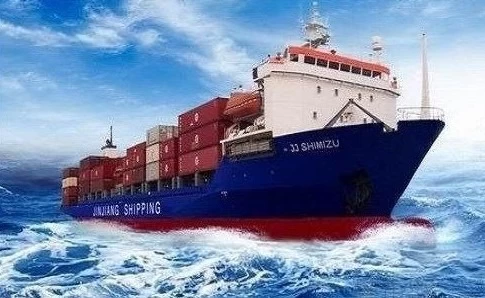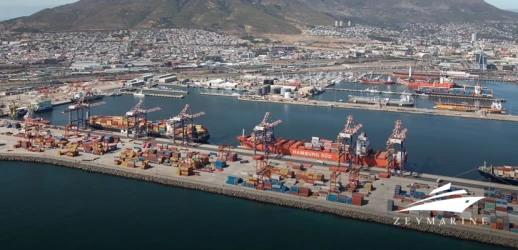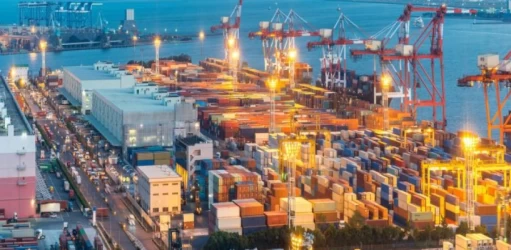Sea freight in the port of Auckland
The Port of Oakland, located in California, is one of the major ports in the United States, serving as a critical hub for international maritime transportation. Established in the early 20th century, this port has grown significantly over the decades, becoming a pivotal point for containerized cargo and trade between the U.S. and Asia. The Port of Oakland plays a vital role in the economic landscape of the region and the nation, facilitating the movement of goods across the globe.
Historical Background
The Port of Oakland was officially established in 1927, but its origins date back to the Gold Rush era when the need for shipping routes increased. The port began to flourish in the 1960s with the advent of container shipping, which revolutionized global trade. The introduction of containerization allowed for faster loading and unloading of goods, greatly enhancing the efficiency of maritime transportation. Over the years, the Port of Oakland has evolved into one of the leading container ports in the United States, primarily serving the Pacific Rim.
Infrastructure and Facilities
The Port of Oakland boasts modern infrastructure and facilities that support efficient maritime operations. Some key components include:
- Container Terminals: The port has multiple state-of-the-art container terminals equipped with advanced technology for loading and unloading cargo. These terminals have the capacity to handle millions of containers annually, making them essential for global supply chains.
- Bulk Cargo Facilities: In addition to containerized cargo, the Port of Oakland is equipped to handle bulk commodities, including agricultural products and raw materials. These facilities are designed for efficient loading and unloading of bulk cargo.
- Intermodal Transportation: The port is strategically connected to various modes of transportation, including rail, highway, and internal transit systems. This intermodal connectivity ensures swift transportation of goods to and from the port, facilitating domestic distribution.
- Warehousing and Logistics Areas: The Port of Oakland provides ample warehousing and logistics space, allowing for the temporary storage and distribution of goods. This capability is crucial for maintaining the flow of merchandise from arrival to final destination.
Role of the Port of Oakland in International Trade
The Port of Oakland is a critical player in international trade, particularly in the Asia-Pacific region. It facilitates the import and export of a wide variety of goods, including:
- Electronics: The port is a major entry point for electronic products imported from Asian countries, making it a vital link in the global supply chain for technology.
- Agricultural Products: Oakland is known for exporting agricultural commodities such as fruits, nuts, and grains to international markets, particularly in Asia.
- Industrial Machinery: The port handles the import and export of industrial machinery, serving as a key logistics hub for manufacturers.
Economic Impact of the Port
The Port of Oakland significantly contributes to the local and national economy. It generates thousands of jobs across various sectors, including transportation, logistics, warehousing, and manufacturing. The economic impact of the port extends beyond direct employment, as it stimulates growth in related industries, increasing revenue and economic activity in the region.
According to recent studies, the Port of Oakland contributes billions of dollars annually to the economy, supporting local businesses and communities. The efficiency and capacity of the port play a crucial role in enhancing the competitiveness of U.S. exports on the global stage.
Challenges and Opportunities
Despite its successes, the Port of Oakland faces several challenges that also present opportunities for growth:
- Infrastructure Development: With increasing global demand for goods, the need for further investment in port infrastructure is critical. Upgrading and expanding facilities will enhance capacity and reduce congestion.
- Environmental Concerns: As with many major ports, environmental sustainability is a pressing issue. The Port of Oakland is actively working on initiatives to reduce emissions and minimize its ecological footprint through green technologies and practices.
- Technological Advancements: The implementation of digital technologies and automation in port operations can significantly improve efficiency and reduce costs. The Port of Oakland is investing in innovative solutions to modernize its operations and streamline processes.
Conclusion
The Port of Oakland is a vital component of maritime transportation and international trade, playing a significant role in the economic landscape of the United States. With its advanced infrastructure, strategic location, and capacity for handling diverse cargo, the port continues to be a key player in global logistics. As it navigates challenges and embraces opportunities, the Port of Oakland is poised to maintain its status as a leading maritime gateway for years to come.
If you have any specific questions or need further assistance, feel free to ask!










